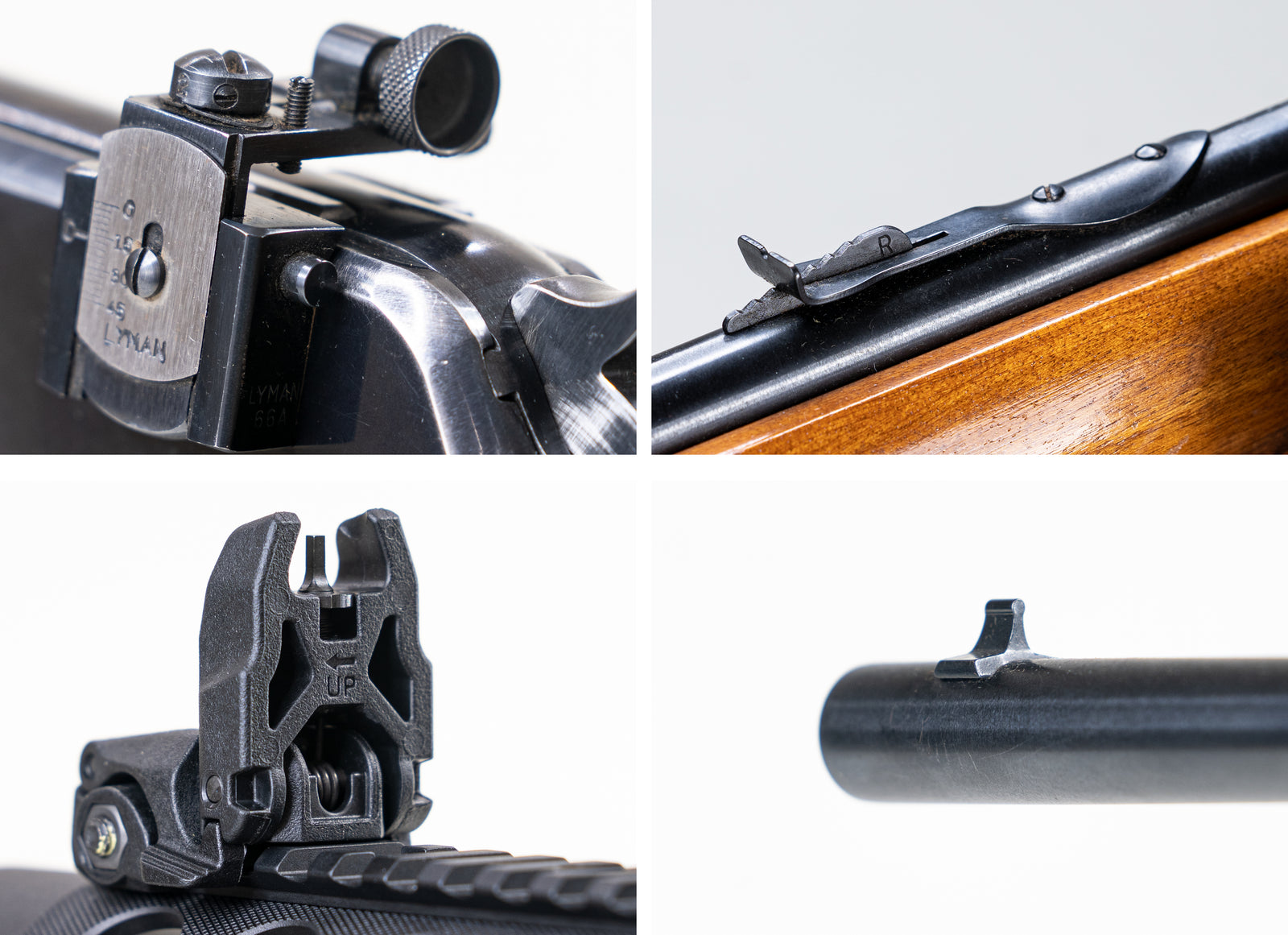When you’re using a scope, let’s be honest - you’re going to be outside… and the outside world is full of grit, grime, dust, mud, strange little fibers. There’s stuff out there, and it’s going to get on your scope.
Most scopes are built to withstand the outside world pretty darn well. Unfortunately, we spend so much time cleaning the gun that we tend to forget about the scope. A little spit shine here and there just doesn’t cut it. If you’re going into a competition, you’re going to want every ounce of light to come through crisp, and every turret click to be without grinding.
Hi, this is Scott with Hi-Lux Optics. Today, we’re going to be looking at how to get your scope to look as pretty as when you first laid eyes on it.
Let’s hop into it with a word of warning. I know most of you don’t take the scope off when you clean your rifle. It’s just too darn much trouble to have to re-zero it every time. If you’re going to leave the scope on when you’re cleaning your rifle - put the flip covers on! Those little cleaning brushes pop off a tiny bit of mist when they come out of the bore, and that mist is not friendly to your lenses. It can eat away at the coating and leave a greasy film behind... that you now also have to clean off. So - cleaning your rifle, flip covers on.
Dusting
Dust. You know it, you love it, you’ve got it at home. Dust can build up over time and cut down on your clarity, your light transmission, even your field of view. Now, a little dirt and dust on your lens isn’t going to do any physical damage. And you can generally let it sit there until it becomes noticeable. It’s when you try to clean your lenses improperly that the dirt becomes a dangerous weapon.
Step one, point the optical surface down, and blow. Just remember not to spray it, and the dust will have a good chance to fall off. We’ll do this on both ends.
For dusting, we’re going to use a special dusting brush. Most cloth wipes are just going to drag the grit across your lens, even if they’re dry. If you’re planning to use your finger or a wet wipe, that grit’s going to be a little closer to muddy sandpaper.
Brush.
If you’ve ever cleaned a camera lens, this is going to seem mighty familiar. You might even have one of these nifty lens-cleaning brush pens lying around.
Personally, I go from the center outward. The glass in the center of your optic is usually the most important, so this method is a little more forgiving than dusting side to side all the way down.
It’s also a good idea - since we’re going to all the trouble anyway - to check your bristles and make sure they aren’t holding onto dust. Have you ever been through one of those automatic car washes with the big rotating sponges? Then your car is covered in tiny scratches from the dirt off other people’s cars? Yeah, this is a bit like that. If you’ve kept your brush dry, you should be able to knock the dust off pretty easily or wipe it off onto another surface.
Then, it’s a good idea to try to get some of that dust out of the runnels at the sides of the glass, but don’t try to force it. Remember, we don’t want to scratch anything.
If you’re having trouble with limp bristles, you can usually just retract the bristles partway to shorten them up.
Microfiber cloth (smudge removal)
Now we can deal with those lovely fingerprints and mascara marks. We’re going to use the thing I told you not to use a minute ago - a cloth. When you buy a scope, there’s going to be a little microfiber cloth included in the packaging. It’s the same when you buy camera lenses, eyeglasses, even phone screen covers.
Don’t just use your shirttail or a tissue. Microfiber cloths are built for this kind of work. There are some specially designed ones that absorb different chemicals a little better, but we’re not going to go wild with that right now.
Check to make sure your cloth hasn’t gotten wet, hasn’t touched solvents, and isn’t covered in dirt.
Then just apply gently in a circular fashion to all affected areas.
If you’re trying to get into any tough-to reach crevices and can’t quite fit, you can wrap your cloth around a q-tip and use that to help reach.
Cleaning the scope body
Your scope is - hopefully - a sealed metal tube. In all honesty, cleaning the outside of the body isn’t going to improve its performance. However, it’s definitely good to clean any grime off of the turrets, just to keep the likelihood low that grit’s going to get in there.
I really only have two pieces of advice for you on cleaning the body:
- Don’t use anything that’s had a cleaning solvent on it. That solvent can leak in at the joints and start to break down your o-rings. Then you’d have to start cleaning the inside of the scope, and that’s no fun.
- Don’t use the same brush on the turrets that you would use on the lens. The lens takes priority. You wouldn’t wipe your nose and then clean your glasses with the same cloth.
On the turrets, we’re going to go about things the same way we worked on the lenses. Brush first, brush gently. Try to make sure that you’re brushing away from any openings. Cramming dirt into every rotating part is the opposite of what we’re going for here.
Turrets aren’t as worried about scratches as lenses are, but they do see a lot more hands on action and likely get dirtier. This is usually where that short-bristle trick comes in handy.
Wiping smudges off the turrets may be a bit tougher. If absolutely necessary, get a new cloth and drip a bit of pure water onto it. Definitely don’t pour the water directly onto your scope.
If you have caps, leave them off for a while to air out the turrets and let them dry. If you don’t have caps, just… try not to make your friends jealous.
Battery Ports
If you have an illuminated reticle, you probably have a battery. Make sure to open the battery ports up from time to time and check for corrosion or leakage. Wherever the battery is kept should be pretty well sealed up, so there shouldn’t be any dirt in there. If you notice rust or a buildup on the ports, you may be able to clean that off with a simple pencil eraser. Start gently, and make sure not to bend any of the leads.
Final word
If you’re going to use a cleaning fluid - and it better not be windex - just make sure to spray the cleaner onto the cleaning device. Don’t spray or pour directly onto the scope.
Aside from that, just remember: This shouldn’t be a stressful experience, like spring cleaning. This also doesn’t need to happen every time you take your scope out. Every once in a while, if you notice some dirt or some light loss, maybe if you’ve been hunting in a sandstorm, spend a few minutes taking care of business.
It’ll probably take you less time than watching this video.





Leave a comment (all fields required)